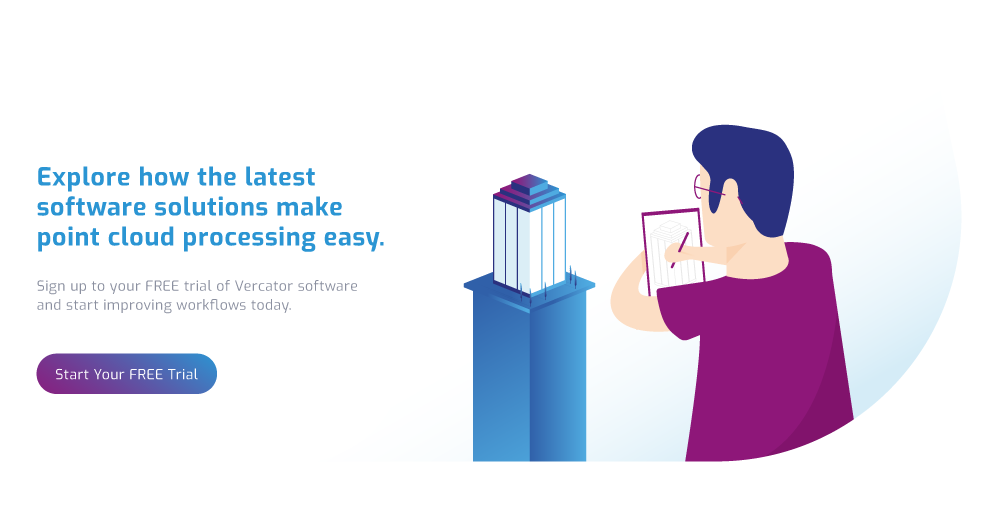The understated benefits of BIM: why BIM is important to building and facility managers

The construction, planning and design elements of BIM (Building Information Modelling) have taken most of the glory and press when it comes to the digitalisation of structural assets. But, only 10%-20% of a building’s total cost will go into construction. The rest is spent on maintaining and operating the structure. Delivering efficiencies and improvements to this process can be even more meaningful than those achieved during the design and delivery phases.
Like traditional forms for architectural planning, BIM follows a structure throughout its lifecycle. The distinct capabilities of BIM continue to improve outcomes long after construction has finished, creating cost savings and efficiencies that feedback into construction — impacting what gets built, when, where and why. Here, we will explain the understated benefits of BIM and explore how building/facility managers can use BIM to improve outcomes and expectations.
The lingering value of BIM objects
There are several definitions of BIM that operate within the construction world that are all worth investigating to truly understand the capabilities of your ‘BIM’ system. But, almost all of these definitions include the use of ‘BIM objects’. These are packets of information about functional assets within a structure, often accompanied by graphical representations. Broadly speaking, BIM objects can be any aspect of a building that is not part of its structural characteristics — commonly including: water systems, electrical systems, individual assets like power generators or air conditioners, windows, doors, and more.
The level of detail included within these objects is simply limited to what design teams wish to include. But, the flexible nature of the BIM platform generally means that building managers can add information to the BIM dataset about existing assets or those that are added later. BIM objects are generally added to convey details about operating costs to clients and ease the installation and construction process. But, once design and construction is completed, BIM objects remain — delivering valuable information to the maintenance and operating process.
BIM objects allow for more transparency and a deeper understanding of what’s inside a building or facility down to very specific nuanced details, while simultaneously providing overviews that allow broad characteristics of a facility to be viewed on a high-level. This provides building and facility managers with easily accessible and detailed overviews of all of the assets under their responsibility. These assets can be searched, sorted and viewed at any time to assist in any number of structural assessments — creating a central point for planning, review and communication. This can include maintenance schedules, electrical consumption, replacement horizons, fault history and more.
BIM centralises information beyond BIM objects
‘True’ BIM is not only defined by the inclusion of object information but by the broader centralising of information. Traditional construction workflows create dozens of disparate technical schematics, each related to different specialisms — making it hard to review all of this information. Single-source-of-truth, database-first BIM places all of this information within a single dataset that can then be accessed flexibly, however it is needed. That centrality of information also makes it easier to share information with different teams across a structure, and any updates made are stored and accessible across the many ways that the BIM data can be viewed and accessed.
Perhaps of greatest value to building/facility managers, all of this structural and asset information can be viewed within intuitive 3D models that are customisable, allowing varying levels of informational detail to be visible at any one time. Effectively, this creates a platform for the simple viewing, expansion and collapse of all relevant information about a structure. Asset information can be viewed within the graphical context of its location and structural relevance. Data that would be otherwise hidden within highly technical and specialised schematics becomes searchable and easily understood.
This is incredibly helpful for maintaining a facility, building or structure since you’ll be able to easily locate, view and interrogate any necessary information from a single point of access and control. Equally, any updates that are made are retained within that one single point. It is simple to know when maintenance tasks need to be undertaken, why they need to be undertaken, what has been done, what it costs and how effective any changes have been.
It is also simple to guide repair teams, allowing them to easily locate assets, find errors and be forewarned of any risks — such as electrical equipment in close proximity to a water main, etc. This is particularly valuable during an unexpected fault, failure or other unforeseen disasters.
The BIM digital platform also provides the necessary toolkit to deploy preventative and proactive maintenance technologies and techniques including x-ray cameras, airborne sound analysis and thermal video analysis. Particularly for managers of complex industrial facilities, these tools are essential to maximising asset productivity and are currently dramatically changing how maintenance is undertaken. Without the digital visibility offered by BIM, these are processes and technologies that are nearly impossible to deploy.
Point clouds are delivering BIM to older structures
For a long time, these benefits of BIM have only been accessible to managers of newer structures, designed from the ground up using BIM software, storage and techniques. Managers of older structures have been stuck using disparate CAD designs, or even physical blueprints and schematics that can become outdated following renovations, and simply limit their ability to deploy modern maintenance technologies.
LiDAR (light detection and ranging) laser scanning surveys and point cloud data processing can deliver as-built BIM schematics of existing structures, allowing managers of older facilities access to modern BIM-enabled maintenance techniques. This type of technology and process has been commercially available since the 1990s. But, it is only in recent years that the technology stack has matured to the point that it is cost effective to deploy in a wide number of circumstances.
Advances in multistage, vector-based processing software have made it possible to quickly and efficiently convert point cloud data into accurate 3D models of existing environments. The creative possibilities of using point cloud data in your workflows are tremendous and cannot be understated. By partnering with the right surveyors that utilise the latest point cloud processing software solutions, you can efficiently digitise an entire building to create accurate datasets and schematics that make managing a building easier and less expensive.
Maintenance is a huge aspect of a structure’s lifecycle — BIM delivers outcomes that matter from beginning to end
The value of a well compiled BIM schematic does not end with the close of a construction project. That information stays with a building, delivering value throughout its lifecycle. Most of the aspects of BIM that make it useful to construction teams deliver value to maintenance and management teams as well.
Having your information in a single location that can be flexibly accessed, manipulated and reviewed makes everything easier. The ability to view that information at various levels of detail, using different specialists tools or generic and intuitive models, delivers the perfect platform to enable the maintenance of complex structures and assets.
When looking to deliver outcomes that matter in the long run, design teams need to think about the maintenance of the structures that they are creating and include asset and structural information within their designs while keeping the post-construction building manager in mind.
Building/facility managers with access to a BIM schematic benefit from making sure that it contains as much information as possible, and updating it accordingly. Managers of older structures can access this level of detail using scan-to-BIM, point cloud and laser scan technology. In all cases, the value this delivers is tied directly to how it is used.
If maintenance teams do not access their BIM data, the fact that it exists will make no difference. Everything related to BIM revolves around putting to use the visibility that BIM delivers. Fundamentally, however, understanding all of the intricacies and specifications of a structure is vital to its long-term health. BIM delivers a means to achieve that. Information visibility and flexible means of viewing that information has obvious benefits to construction. But, the understated, and perhaps larger benefit comes from how this allows for efficiency gains in maintenance.
You have been reading about how BIM delivers positive outcomes for the post-construction maintenance and operation of a structure — helping building and facility managers do their jobs. If you want to learn more about how to use and access BIM technology and processes, or are still confused about the different definition of BIM, we have written an Ultimate Guide to BIM in 2019 just for you.
Tags: bim


